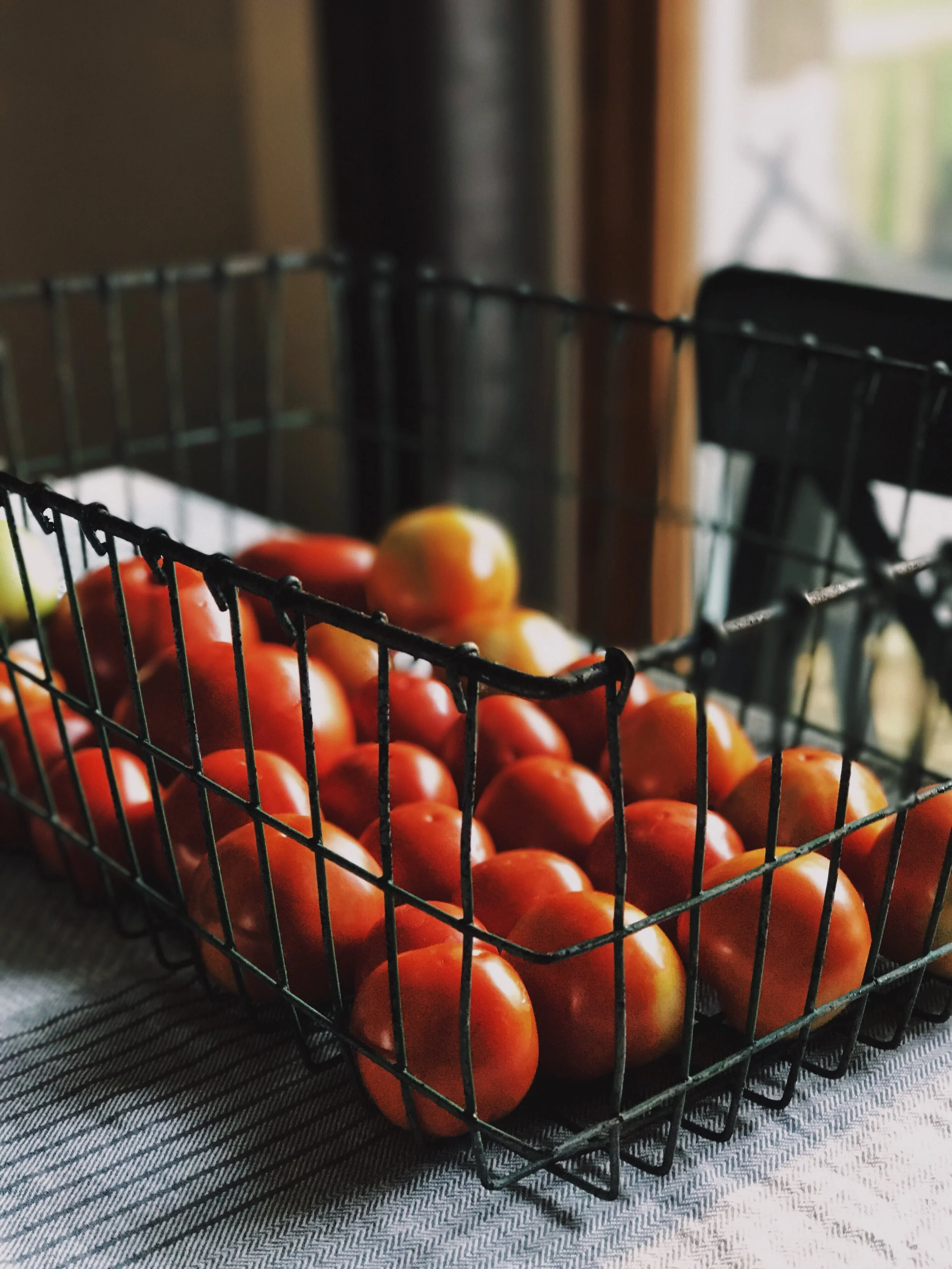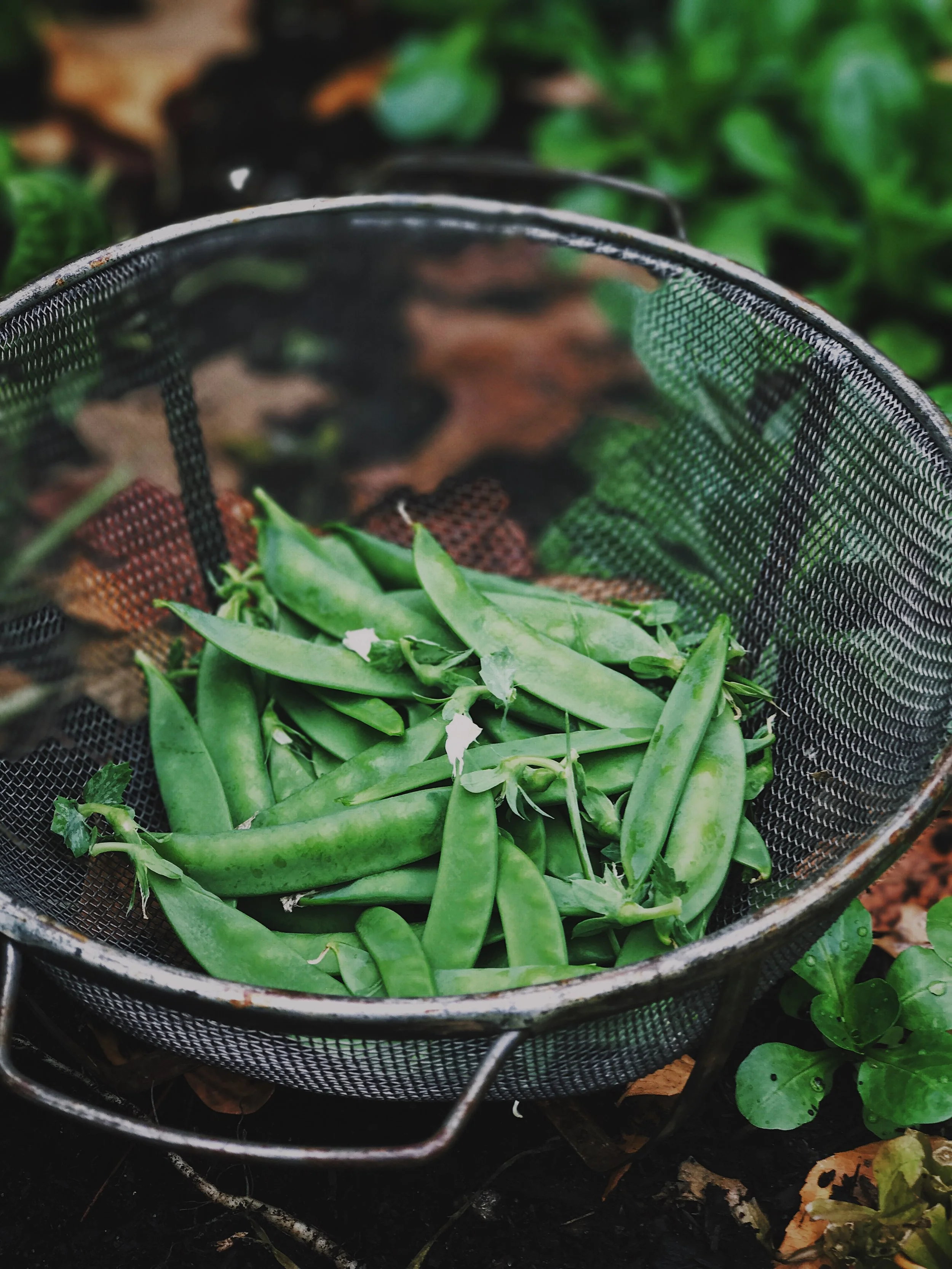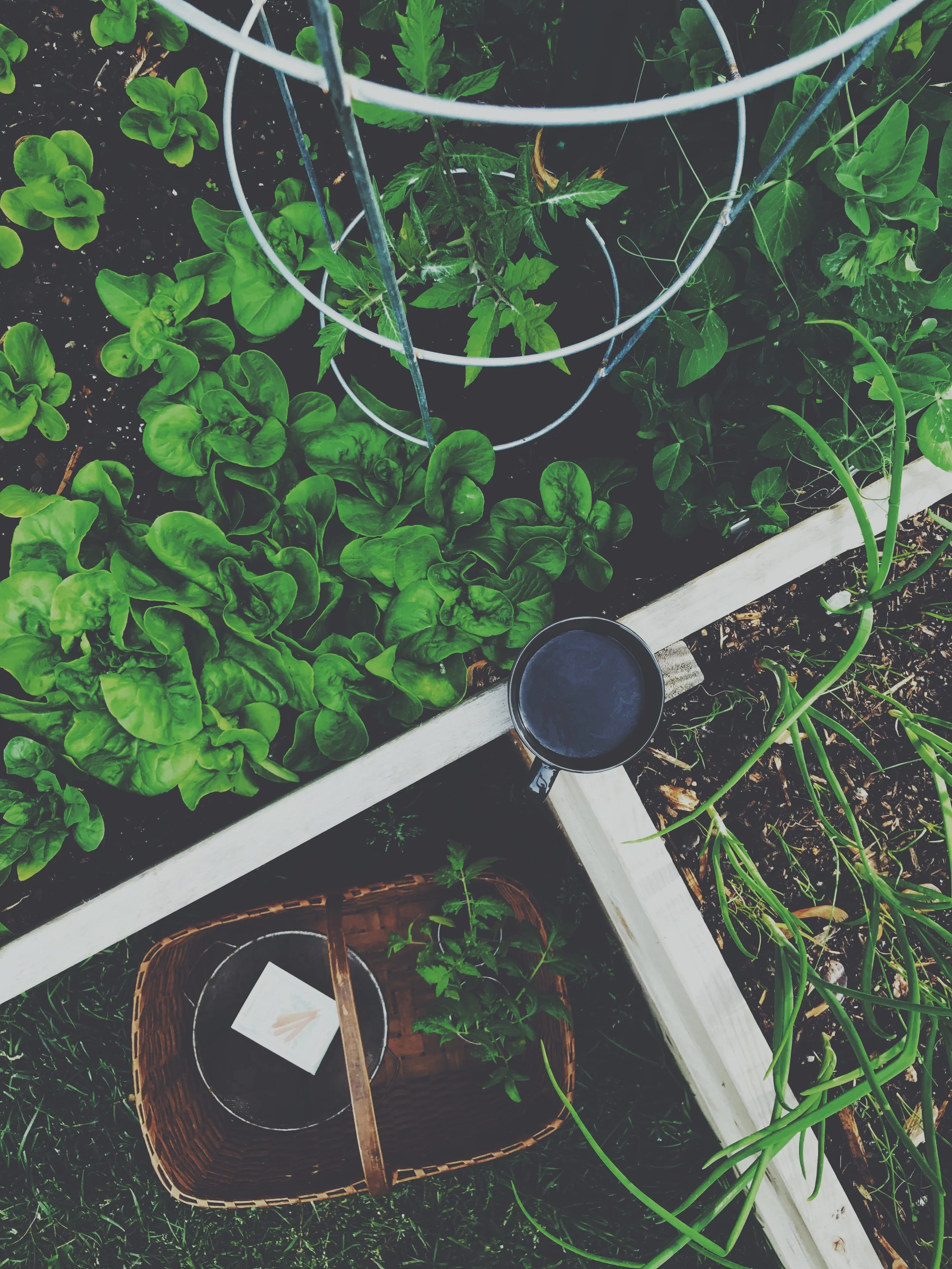Tomatoes & Squash
You cannot beat garden-grown tomatoes and summer squash. Tomato plants smell amazing (I am coming to realize through my posts that I really love to smell my garden...) and to watch the tomatoes swell out of their tiny yellow flowers is amazing. One of my favorite parts of summer is to take my morning walk through the garden, seeing all of the squash blooms wide open, filled with the soft buzzing of bees. Even though I do have other garden favorites, there is something so magical and gratifying about growing big, beautiful fruiting vegetables.
I have grown a range of tomato varieties in the past, but find myself coming back again and again to the Beefsteak Tomato. They are the most disease resistant, delicious and versatile variety I have come across. For me, I want a tomato that makes a great BLT, filling the whole slice of bread with a thick tomato slice, or can easily be canned for the winter and have great results. I am also a huge fan of fried green tomatoes, and a Beefsteak tomato sizes up well and stays firm when green, perfect for frying.
I typically grow four plants every year, with a foot and a half of space between each plant. With my garden bed being a two-foot tall raised bed, the tomato roots can grow deep and the plants receive enough air flow. The four plants provide enough tomatoes for us to enjoy throughout the season, as well as providing me with enough to can several batches of whole tomatoes.
In past seasons, I have stuck with growing only Patty Pan Squash as my summer squash variety. I love the irregular shape, and their light, buttery sweet summer squash flavor. Their flavor is more like a crook neck yellow summer squash over a zucchini, yet far more tender. Having grown Patty Pan for a few years, I am ready to try something new. This year, I decided to grow 'Ronde de Nice' Heirloom French Zucchini. My husband and I spent a week and a half in Italy last July, and enjoyed these squash on pizzas and in a few pasta dishes. With no seeds on the inside, it has a wonderful crispness and a buttery, rich flavor. It's like the most perfect zucchini you have ever had. It is going to be a bit of a wildcard as I have never grown it and am unsure of how massive it will be. I left a large patch, about 3' x 5' and am planting cut-and-come-again lettuce, mustards and radishes around it during the spring to fully use this garden space.
Living in Minnesota, when the leaves start to turn and there is a slight chill in the air, you cannot help but crave squash soups, chilis or just roasted with a decent dollop of brown sugar. I have always stocked up at the farmer's market, but decided last season to give winter squash a try. I learned a thing or two from this experience, the major thing being that winter squash have a very long growing season, as they are not harvested until the skins are tough and the plant is dried up. The plants also take up a massive amount of room, with vines up to 10 feet long. I ended up growing Delicata Squash last year, and harvesting them too early, as the plant started taking over the garden. They tasted great, but did not have the vibrant orange flesh of a winter squash.
This year, I am growing 'Honey Nut' Baby Butternut Squash . These 'babies' grow to be 1 pound each on a smaller, climbing vine – around 5 feet long. They are going to be so cute! I am planning on planting one plant at each end of the garden bed, letting them grow up the lattice behind the garden. I just love the idea of having a personal- sized winter squash for recipes next fall. Butternut in my opinion is the best winter squash to grow because of how much more vegetable you get verses seeds, and the incredibly butter-y texture and rich flavor.
One wonderful thing about summer and winter squash is that their male blooms are edible. Male blooms? Rachel, are you crazy? No, I promise, it is a thing. The male blooms do not produce fruit, and are mainly there to help pollinate the female blooms, which produce the fruit (If you google male and female squash blossoms, you can see what the visual difference is, helping you identify which to pick and which to leave). I hate wasting any of what I grow, so I make a habit of harvesting mine and trying them in a variety of recipes. We enjoyed squash blossoms on pizza while in Rome and it was divine. I also enjoy them stuffed with ricotta and lightly fried - such a treat! When harvesting my squash blossoms, I tend to wait until the bloom has been open for at least a full day. Bees need enough time to gather the pollen to pollinate the squash, so be careful not to rush and harvest all your male blooms.
This post has me so excited for the weather to warm up. Looking forward to watching these plants grow (and smelling them, apparently...)












